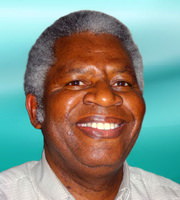
As any parent will agree, it is always well-worth having the first aid knowledge and skills to deal with an injury, from a minor graze to a potentially life-threatening choking incident.
As children grow in independence, however, it is not possible to keep them wrapped up in cotton wool and neither can you always be there with the first aid box on hand for immediate care. Therefore it makes perfect sense to train your children in the basics of first aid care so that should a situation arise affecting a friend, a relative or even themselves, you can be sure your child can respond effectively while awaiting adult support.
The following are the most important aspects which you should include in your child’s first aid training:
Burns
In the first instance, place the burn under cold running water. Many children think a quick splash is sufficient and the coldness of the water may itself be unpleasant but the longer the burn is kept cold the more quickly it will recover.
Burns should not be covered with plasters or dressings. In the event that a burn is larger than a 50p coin, more specialist treatment should be sought.
In the serious event of a person catching fire, your child should know (and practice) the STOP – DROP – ROLL action to extinguish the flames.
Cuts and Grazes
Placing a cut under running water will only inhibit natural healing, although it is an understandable response to wash away blood. Cuts should have pressure applied for several minutes using a clean towel or piece of kitchen roll until bleeding stops (holding the injury above the height of the heart will help). Clean the wound with an antiseptic wipe and, if it is shallow, leave to air dry.
A deep wound will need expert treatment so keep the pressure applied to restrict bleeding and be sure your child knows to seek adult help.
Splinters
The temptation is to pull a splinter out, especially if an end is protruding from the skin. However the first step is to carefully wash the area with warm, soapy water, taking care not to push the splinter in further.
If the end can be seen above the skin, it can be removed slowly with tweezers. If it is embedded under the skin, an adult should be asked to look at it – Forget the memories of grandmothers wielding sharp needles!
Neck and Spinal Pain
Most children are adventurous creatures but unfortunately climbing trees and exploring play areas carries an element of risk. Your child may come across a sibling or friend who has fallen from a height and, in the event of any neck or back pain after a fall, the injured child should not be moved. It is only natural for a child to encourage another to sit up but the importance of keeping the patient still should always be reinforced.
Teach your child to stay calm and fetch help, or send a friend for a help while they stay with the injured person.
Be Aware of Danger
Whatever the situation, ensure that your child understands that he must initially assess the risk of danger to himself. This is the ‘D’ in the renowned ‘DR ABC’ of first aid care. Your child must not place himself at risk in order to assist someone else but should immediately obtain adult help.
Ensure that your child knows how to seek paramedic assistance and always ensure that you, a relative or a neighbor can be contacted if you are leaving them alone at home.
Training your child to administer basic first aid is a logical step to enabling them to live independently and safely, but it is important that you know yourself how to respond in the event of an injury to a member of your family. Also, to train your child you need to understand basic first aid procedures so that you share only the most relevant and up-to-date information.
With many organizations offering pediatric or emergency first aid courses at a low cost it is easy to bring your own knowledge up to speed so that everyone in your family can benefit.
Image Credit: Lindsay Shaver – http://www.flickr.com/photos/lindsayshaver/

















